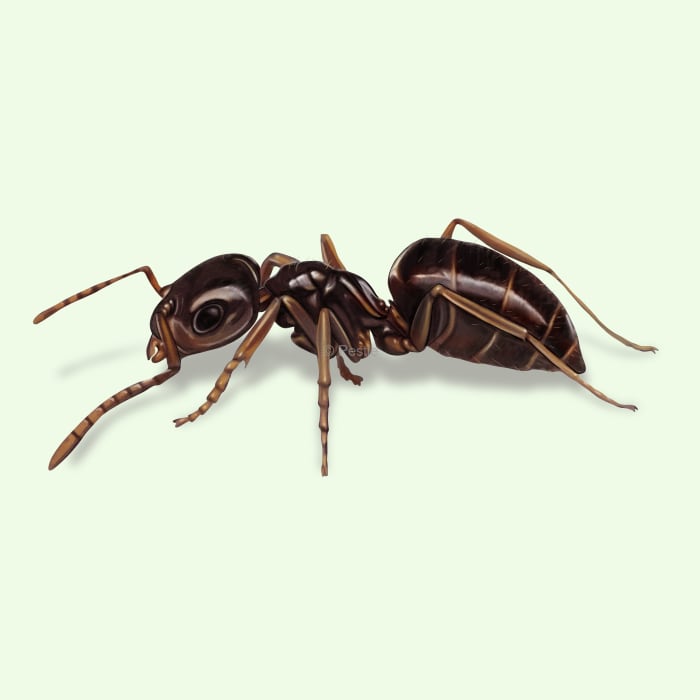How to identify and get dark rover ants

Not all that wander are lost
Sometimes, a stray ant makes it into your kitchen, and that’s the end of the story. Other times, that stray ant finds a sweet treat and then invites all of her sisters to bring back the harvest. If you live in the southern states of the US, you might be dealing with the invasive dark rover ant.
These small, dark-colored ants are often found foraging in homes, especially in warm climates. They are native to South America but have been accidentally introduced into Louisiana, Mississippi, Alabama, Georgia, and Florida.
They often nest outdoors in soil, mulch, or under rocks but will enter homes in search of food and moisture. When they are raiding your pantry for sweets, they mostly visit aphids for honeydew or plants for nectar.
How to identify dark rover ants
Dark rover ants are very small and are usually dark brown or black in color. They have a one-segmented waist, elbowed antennae, and long hairs on their back. Their eyes are also fairly big for ants. These ants are typically found foraging in long, erratic trails, often near sugary food sources or moisture-rich areas like kitchens or bathrooms. You may also notice them indoors or outdoors, especially around cracks, windowsills, and along the foundation of your home.
These ants are similar in size to pharaoh ants, but they are darker brown in color.
How big are dark rover ants?
Dark rover ants are about 1/16 inch long.
Where do dark rover ants live?
They are found throughout the southern United States, particularly in warmer climates like Florida, Alabama, and Georgia, but have been reported in other regions as well, such as Texas, Arizona, and South Carolina.
You’ll find dark rover ants in kitchens and bathrooms and near moisture sources. Outdoors they nest in soil, mulch, and under rocks, often near the foundation of homes.
How to get rid of dark rover ants
Many people have found it difficult to control dark rover ants. The best thing to do is prevent them from getting inside your home.
That includes the following strategies:
- Sealing entry points: Check for cracks, gaps, and other openings in your home’s walls, windows, and doors, and seal them to prevent ants from entering.
- Removing food sources: Clean up crumbs, spills, and other food debris in your kitchen and dining areas, and store food in airtight containers to avoid attracting ants.
- Fixing moisture problems: Dark rover ants are drawn to moisture, so repairing leaks and reducing humidity in kitchens and bathrooms can help discourage them.
Also, consider establishing an insect barrier around your home. Pestie offers a pro-grade DIY solution that prevents dark rover ants from wandering inside.
Treat dark rover ants with Pestie
If you're still having trouble keeping dark rover ants away, the best option is to use a pro-grade, effective pest control solution like Pestie.
Pestie is a do-it-yourself pest control solution that's specially designed to keep dark rover ants and other pests away from your home.
With Pestie, you can rest easy knowing that your living space is protected and free of creepy crawlies. And the best part? It's designed for people, pets, and the planet, so you can say goodbye to harsh chemicals and hello to peace of mind!
- Save hundreds compared to traditional annual pest plans
- People, pet, and planet-friendly
- Pro-grade customized formulas
Quick facts
- Scientific name
Brachymyrmex patagonicus
- Colors
Dark brown or black
- Life span
workers – 2-3 weeks; queen – 2+ years
- Diet
Sugary substances
How dangerous are Dark Rover Ants?
Low danger risk
Dark rover ants are more of a nuisance than a threat. They don’t bite or sting.
Unlike most ants, rover ants don’t leave a pheromone trail when they go out to forage for food.








